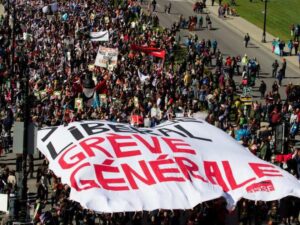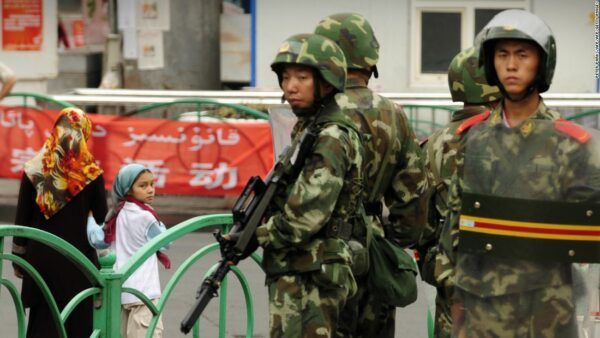 Step up industrial action to defeat government plans
Step up industrial action to defeat government plans
Workers’ mass protests and the votes for strikes in the public sector, starting at the end of September, were triggered as a result of terms the Liberal Party government of Philippe Couillard wants to impose on new collective agreements, which expired at the end of March. This includes a wage freeze for two years, pushing up the retirement age to 62 years (a special category of workers, such as nurses, currently retire at 60 years), introducing more ‘flexibility’ in the workplace, the abolition of bonuses and concerning the equalization of night pay with day pay). These are the most regressive government plans for decades.
One important undercurrent of this workers’ explosion is that many youth from the ‘Maple Spring’ generation (the student mass movement that developed from 2012) have now started to enter the job market and have injected a new spirit of rank-and-file trade union militancy into the workplaces.
On the 30 September, there was a 24 hour strike and a demonstration organized by the FEA (Federation of Autonomous Teachers), a small teachers’ union which is not organized in the ‘Common Front’ (the main public sector union umbrella which represents over 400,000 workers – teachers, health workers and state employees, for example). While the FEA represents about 35,000 teachers across the whole of Quebec, its demonstration in Montreal on the 30 September attracted 25,000-30,000 people, alone.
On the same day, workers whose trade unions are organized in the ‘Common Front’ voted on strike actions against the government’s plan. The strike approval rates reached record levels across, generally between 85% and 95%, with some reaching up to 100%. In one hospital in Montreal, where a member of Alternative Socialiste works, 94% of the ‘blue collar’ workers and 98% of the administration employees voted in favour of the strike. This is unprecedented, and symptomatic of the militant mood.
The strike mandates start on 26 October and are based on six days-long ‘rotational strikes’ (one locality taking action after another). Starting the strikes so late runs the risk of breaking the momentum of the movement. Rotating strikes can be useful to flex the muscles of the working class, if it is to prepare for a one day of strike of all the workers but leaving it at the level of localized actions can also undermine the effects of the strike. The strategy of the union leaders is “give a chance for negotiations”. Under huge pressure from below, they reluctantly called their members to ballot for strike action.
Wider anger
Indicating how the government’s attacks are angering wider sections of society, on 1 October parents of students in primary and secondary education organized protests, involving parents, teachers and students forming human chains around their schools to “protect” them against cuts.
On 3 October 150,000 public sector workers from the Common Front demonstrated in Montreal. It was the most youthful and militant union demonstration for a very long time.
Members of Alternative Socialiste (CWI in Quebec) participated, including public sector workers, selling papers and running a stall. Alternative Socialiste calls for a stepping up of industrial action which can include a Quebec-wide general strike, involving both the public and the private sectors, to decisively defeat the government’s plans.



